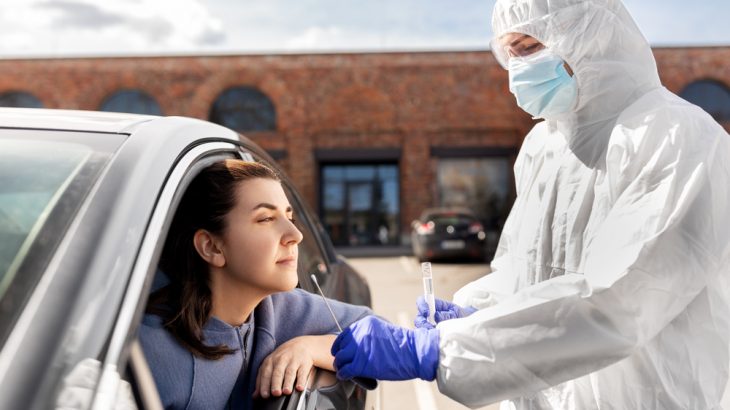Since the coronavirus pandemic began in early 2020, businesses have been creating plans for dealing with the virus. Employees have been working remotely and social distancing rules have been in place. Offices have been observing additional cleanliness procedures and masks have been required.
But what if, despite all of your company’s best plans and efforts to prevent the illness from reaching your offices, an employee tests positive for COVID-19?
Send the Employee Who Tested Positive for COVID-19 Home
The first and most important step is to ensure that the employee that tested positive for COVID-19 stays home. The coronavirus is extremely contagious and if the employee comes into the office, they can easily spread it to other staff members. Even if that employee has used up all of their sick days, it’s important to ensure that they can stay home and away from their coworkers. Allowing that employee to come into work will spread the coronavirus to other staff members and potentially shut down the entire office or location because too many people are sick.
Even if the employee shows no symptoms, they should stay home. Even those who are symptom-less can still spread the coronavirus to others. If the employee is sick and can’t work, it’s important to reassure them that there will be no repercussions for staying home. Depending on the company’s sick leave policy, some employees may feel that they have to come into work even when they’re sick. That’s the last thing that should happen during a pandemic, however.
Clean Any Surfaces or Items the Sick Employee Has Touched
If the employee who has contracted COVID-19 came into work after being exposed, make sure to thoroughly clean and disinfect anything that the employee has touched. If possible, vacate that area completely. Any COVID-19 particles that could be on surfaces will die after a period of time. Anyone who is performing the cleaning should be provided with protective gear because they will be exposed to both the virus and chemicals from the cleaning products.
Inform Employees of the Exposure to the Coronavirus
Inform your other employees that they may have been exposed to the coronavirus. According to the CDC, the risk of exposure occurs within a distance of six feet. Anyone who came into contact with the affected employee even in the period before the positive test should be notified. Be careful not to disclose who tested positive, however. Revealing the identity of the employee in question is a violation of their privacy.
Decide When the Employee Can Return to Work
If the employee isn’t showing symptoms and remote work is possible, working from home may be the best solution. However, if the employee’s job is on-site only, it’s important to decide when the employee will be allowed back. How long the employee needs to self-isolate will depend on the severity of the symptoms. It should be a minimum of two weeks before they’re allowed to return to work, even if they exhibit no symptoms. If the employee experiences mild symptoms, they should be able to return after 14 days if they have gone more than 24 hours without symptoms. If the symptoms are severe, however, that time should be extended to at least 20 days.
Many employers require a negative test result before an employee who contracted COVID-19 is allowed to return to work. However, this is not only inconvenient for the employee but could keep them out of work for much longer than necessary. Test results can sometimes take up to a week. On top of that, tests can come back positive for up to three months after someone was infected, which is long after there’s no longer a risk of contagion.





